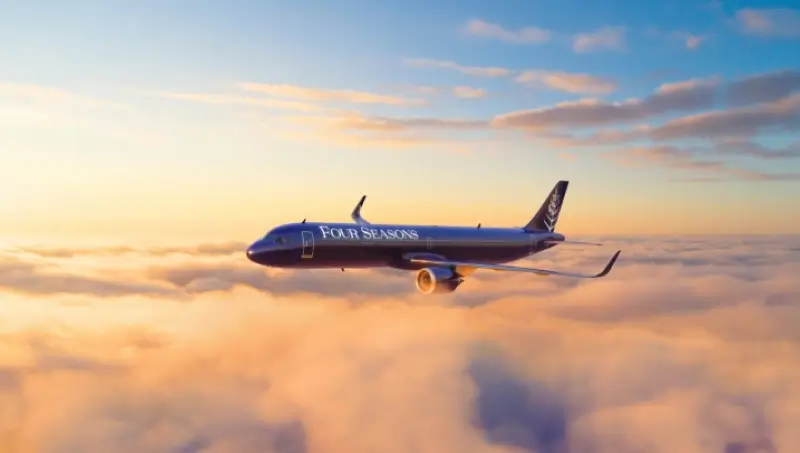
Crosswind landings at Birmingham Airport
Jan 22, 2015

Crosswind landings at Birmingham Airport can be particularly challenging due to the airport's location and prevailing weather conditions. Pilots must carefully manage the aircraft's alignment and speed while grappling with lateral winds that can push the plane off course during approach and landing. The airport's runways are oriented to accommodate varying wind directions, but strong crosswinds can still test even experienced aviators. Proper technique, including the use of a crab angle and side slip maneuvers, is essential for a safe touchdown. As a result, these landings require precision and skill, contributing to the dynamic nature of aviation at this busy hub.
Birmingham Airport, one of the UK's busiest airports, often experiences challenging weather conditions, particularly crosswinds. Pilots must be well-prepared to handle these situations to ensure a safe landing. A crosswind landing occurs when the wind blows across the runway rather than directly down it, posing additional challenges for pilots. Understanding how to execute a successful crosswind landing is vital for both pilots and enthusiasts observing aviation at Birmingham Airport.
Understanding Crosswinds
Crosswinds can significantly impact an aircraft's approach and landing. The strength and direction of the wind can cause the aircraft to drift from its intended flight path. Pilots must compensate for this by adjusting their approach angle and control inputs. At Birmingham Airport, the prevailing wind conditions can vary, making crosswind landings a common occurrence.
Crosswind Landing Techniques
There are several techniques pilots use to perform a safe crosswind landing:
- Crab Method: This involves angling the aircraft into the wind while maintaining a straight path toward the runway. Just before touchdown, the pilot levels the aircraft and aligns it with the runway.
- Wing Low Method: In this technique, the pilot lowers the wing into the wind while applying rudder input to keep the aircraft aligned with the runway. This method is effective in stronger crosswinds.
Key Factors Affecting Crosswind Landings
Several factors influence the effectiveness of crosswind landings at Birmingham Airport:
| Factor | Description |
|---|---|
| Wind Speed | Higher wind speeds require greater skill and precision from the pilot. |
| Runway Orientation | The alignment of the runway with respect to the wind direction can ease or complicate landings. |
| Aircraft Type | Different aircraft have varying handling characteristics in crosswinds. |
Charting Crosswind Landings
To assist pilots in navigating crosswind conditions, Birmingham Airport provides various charts that indicate wind conditions and recommended approach procedures. These charts typically include:
- Wind Rose Diagrams: These visual aids show the frequency and direction of winds, helping pilots anticipate crosswind challenges.
- Runway Condition Reports: Information on runway surface conditions can affect landing performance, especially in adverse weather.
Training for Crosswind Landings
Effective training is essential for pilots to master crosswind landings. Flight schools often simulate various wind conditions to prepare pilots for real-world scenarios. Birmingham Airport's favorable location and diverse weather patterns provide an excellent training ground for aspiring pilots.
Best Practices for Pilots
For pilots landing at Birmingham Airport, adhering to best practices is crucial for safety:
- Stay Informed: Regularly check weather reports and forecasts to anticipate wind conditions before flight.
- Practice Regularly: Frequent training in crosswind landings helps maintain skills and confidence.
- Communicate Effectively: Use clear communication with air traffic control to ensure smooth operations during challenging conditions.
The Role of Technology
Advancements in technology have significantly enhanced the safety and effectiveness of crosswind landings. Modern aircraft are equipped with sophisticated avionics that assist pilots in managing crosswinds. Automated systems can help stabilize the aircraft during approach and landing, reducing the workload on pilots.
Conclusion
Crosswind landings at Birmingham Airport are a vital aspect of aviation that requires skill and precision. By understanding the techniques, factors, and best practices associated with crosswind landings, pilots can ensure safer operations. Additionally, the use of technology continues to improve the safety of these challenging maneuvers. Whether you are a pilot, an aviation enthusiast, or simply a traveler, appreciating the complexities of crosswind landings enhances the overall experience at Birmingham Airport.
Related Articles

Explore Thailand: The Best Islands to Visit for Paradise, Adventure, and Relaxation

The Ultimate Guide to the Best Islands in Thailand for Your Next Getaway

Do babies need passports? How to get a passport for a newborn

How to get a U.S. passport fast: here’s how to expedite the process

What is Mobile Passport Control: 5 reasons why you should use it

SENTRI vs. Global Entry: A detailed guide

Do you need a passport to go to the Bahamas? Let’s find out

Do you need a passport to go to Mexico? A detailed guide

Do you need a passport to go to Canada? We got the answer

Do You Need a Passport for a Cruise: An Essential Travel Guide

Booster Seat Requirements: All the Rules to Follow in Your Rental Car

What Are the World’s Most Powerful Passports, and How Does Yours Rank?

How to Take a Passport Photo at Home: A Helpful Guide

You've got to have heart! Southwest's new livery

Your opinion: Should water be free on low cost carriers?

Young women bolder than guys as solo travellers
